MXA INTERVIEW: THE WILD & CRAZY LIFE OF KEITH BOWEN
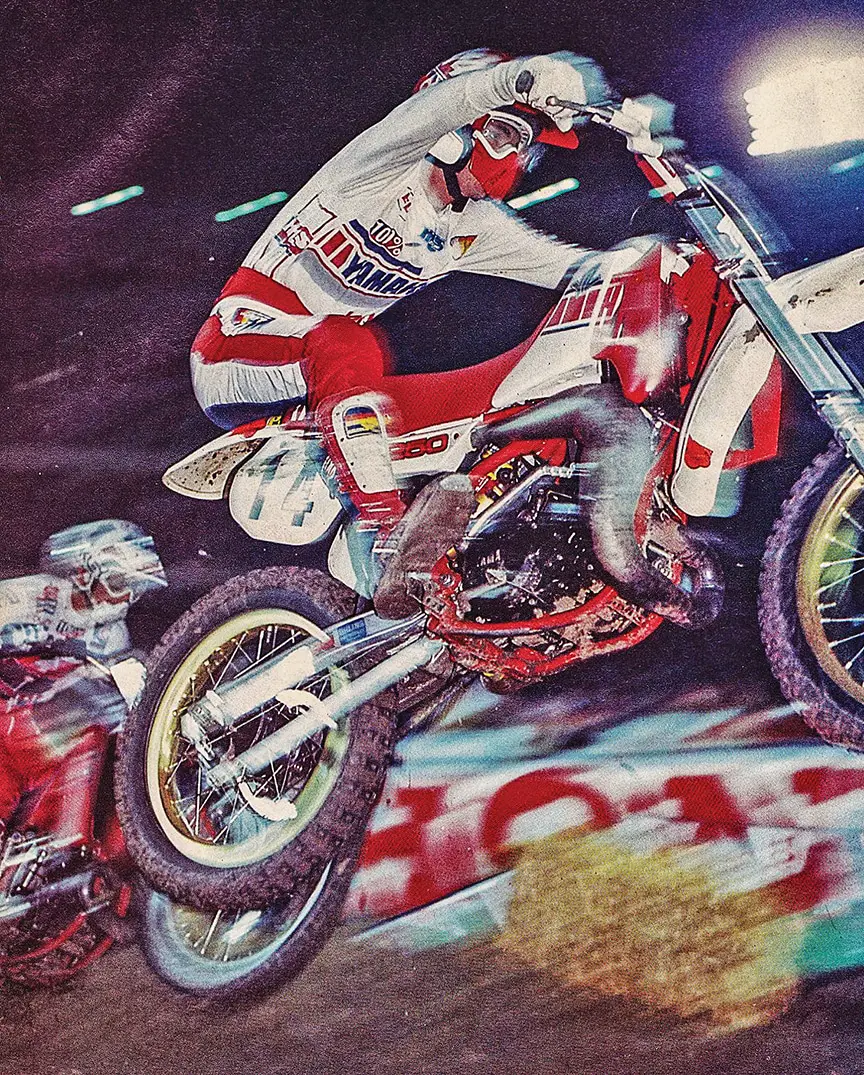 Since there was no 125 East/West Supercross class when Keith first signed with Yamaha, he went straight to the Premier 250 class.
Since there was no 125 East/West Supercross class when Keith first signed with Yamaha, he went straight to the Premier 250 class.
BY JIM KIMBALL
THOSE MINI ENDUROS RAISED THE BAR FOR MINIBIKES, DIDN’T THEY? Yes, and that was my first bike that I raced. When I was 10, my dad put a pipe and knobby rear tire on it, and I raced it at Baja Acres. I got seventh my first race. The gates were full back then; there were 60 riders, and I got that seventh. It was 1976, and I raced six races that year.
WERE YOU GETTING HELP LOCALLY THEN? When I was on the 80s, General Cycle in Lincoln Park, Michigan, helped me with some discounts on parts and on the bike. In 1978, they also took me to Florida for the Mini-Olympics for the first time. It was my first big race out of state, but I did not do that well and finished mid-pack.
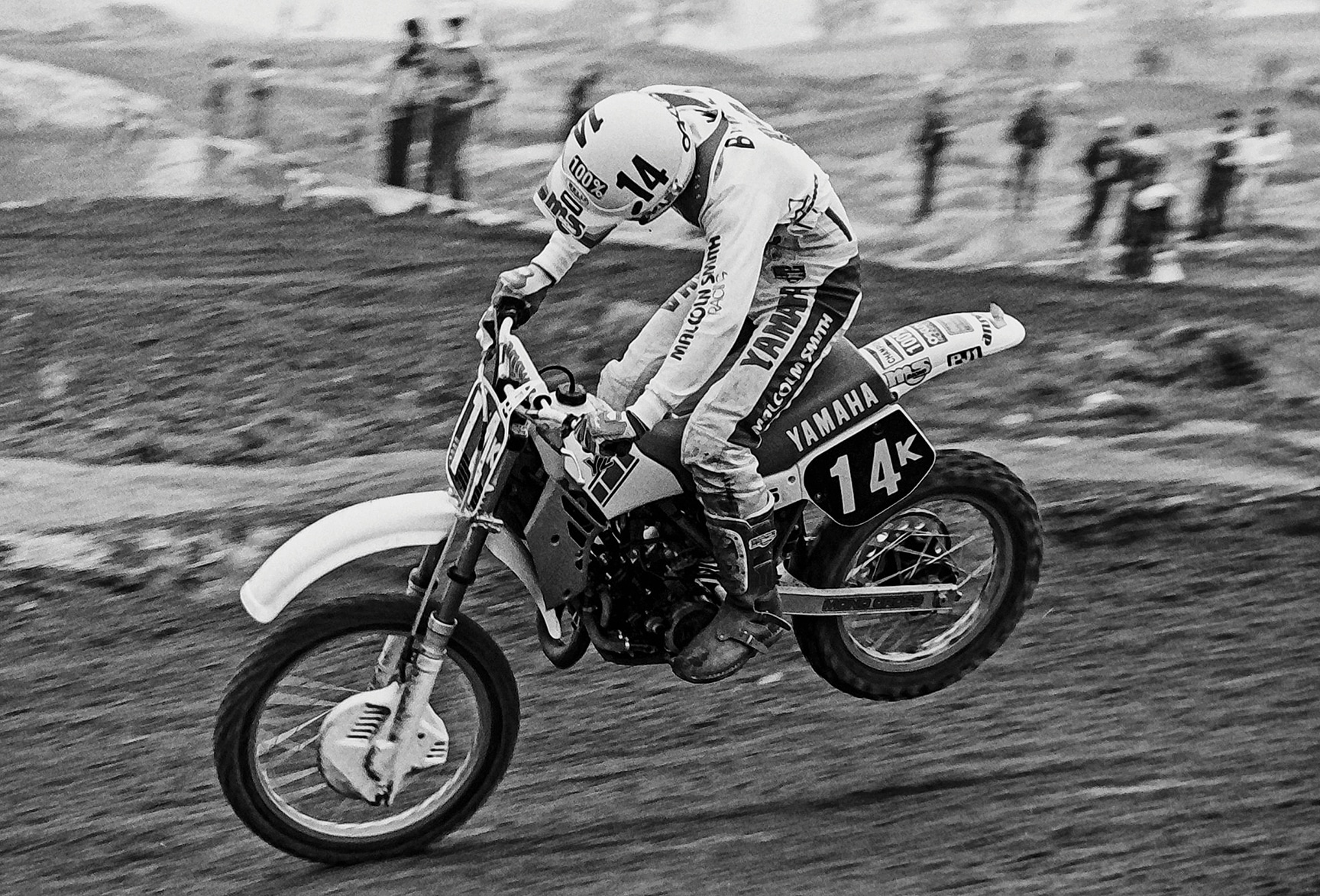 During his eight seasons on the AMA circuit, Keith had eight different National numbers. He ran number 14 in 1985.
During his eight seasons on the AMA circuit, Keith had eight different National numbers. He ran number 14 in 1985.
AT SOME POINT, YOU HOOKED UP WITH MICHIGAN’S TEAM DYNAMIC, RIGHT? In 1980, we got in with Team Dynamic. They had different-colored jerseys, which determined how big of a discount you got and which type of ride you were on.
Everybody started out with the yellow jersey, then you got the red jersey (that was the B team). Later, you got the red and gold jersey with the stars down the side, which was the A team. That was the jersey you wanted.
By 1981, Team Dynamic gave me a bike and $1000 in parts. But, for 1982, I got an in-house factory Yamaha amateur ride. Yamaha sponsored Ron Lechien and me. We got unlimited bikes and unlimited parts, which was as close to a factory ride as a local could get.
WHEN DID YOU RACE YOUR FIRST AMA NATIONAL? I did the last two outdoor Nationals in 1983 riding a YZ250, and I got fifth overall in Denver and sixth overall at Millville. Then I signed with Factory Yamaha.
DID THE NATIONAL FIELD FEEL MUCH FASTER THAN IN AMATEUR RACING? I was shocked at the speed of David Bailey and Bob Hannah.
WHEN I WAS 10, MY DAD PUT A PIPE AND KNOBBY REAR TIRE ON IT, AND I RACED IT AT BAJA ACRES. I GOT SEVENTH MY FIRST RACE. THE GATES WERE FULL BACK THEN; THERE WERE 60 RIDERS, AND I GOT THAT SEVENTH. IT WAS 1976, AND I RACED SIX RACES THAT YEAR.
YOU SIGNED WITH TEAM YAMAHA IN 1984. IS THAT RIGHT? Yes, I signed in 1983 and did those two Nationals. There was a one-off Supercross in San Diego that I did, which Lechien won on a production bike. When I signed my contract, I was supposed to have a works bike, but in 1984 Yamaha went to production bikes.
That was how Ron Lechien got out of his Yamaha contract and went to Honda. He had signed a multi-year Yamaha contract, but in his contract it stated he would have a works bike, so he was able to go to Honda.
EVEN ON A PRODUCTION YAMAHA, 1984 WAS A PRETTY GOOD DEBUT SEASON FOR YOU. It was okay. Yamaha was happy, and I was happy.I had a couple of top fives and more top 10s, finishing sixth overall in the 250 Nationals. That was my first time ever riding Supercross, and I finished 13th in points.
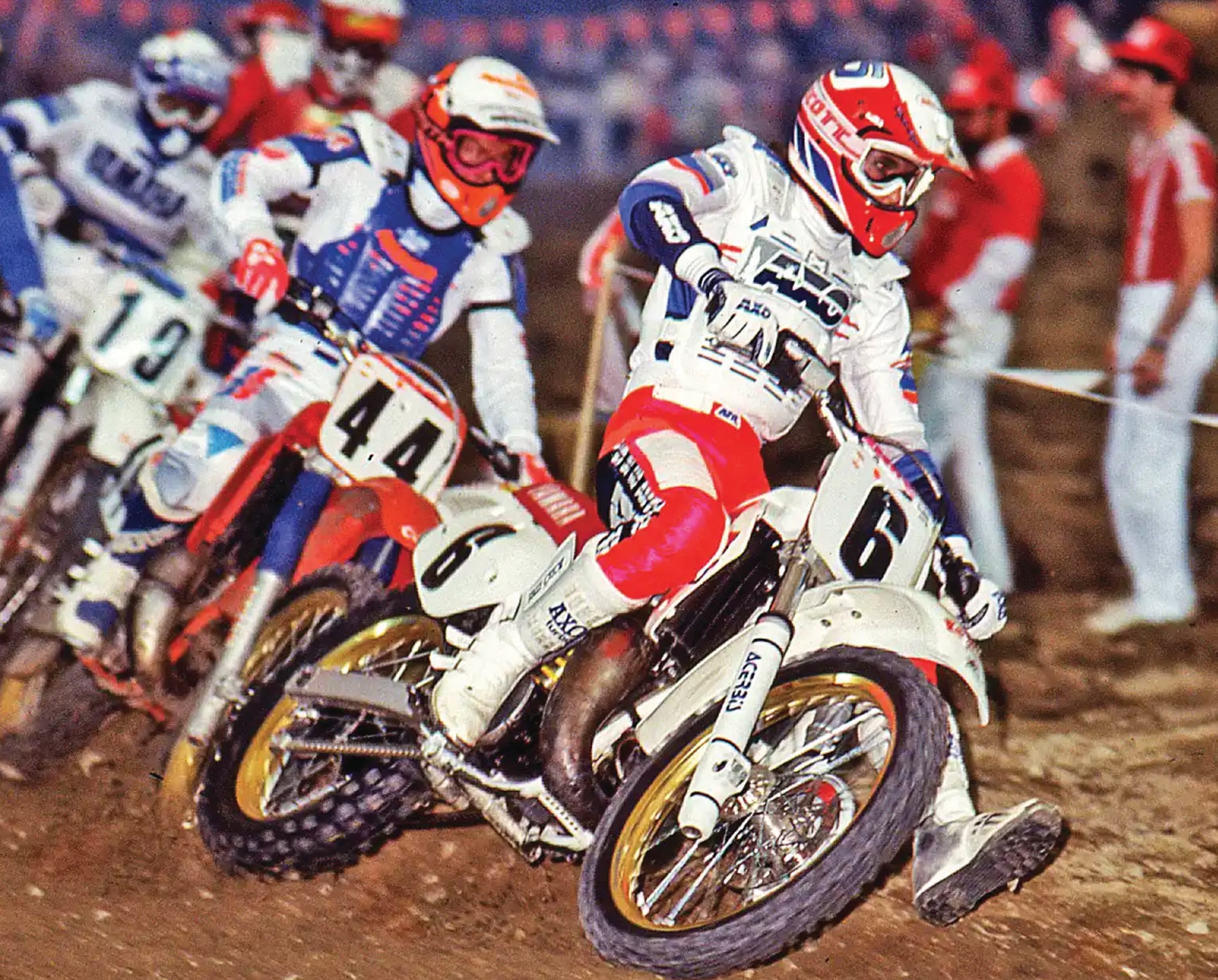 Keith had a reputation as a very fast starter. Here, during the 1987 Supercross season, Keith (6) leads Fred Andrews (44) and Jim Holley (10) on his YZ250 two-stroke. Keith finished fourth in the 1987 Supercross Championship and fourth in the 500 National Championship that year.
Keith had a reputation as a very fast starter. Here, during the 1987 Supercross season, Keith (6) leads Fred Andrews (44) and Jim Holley (10) on his YZ250 two-stroke. Keith finished fourth in the 1987 Supercross Championship and fourth in the 500 National Championship that year.
WHO WAS YOUR MECHANIC? My mechanic was Ron Heben, who had been Mike Bell’s mechanic, and he was great. Ron had a tough time with me, though, as I never liked training and didn’t take it that seriously. I was a teenager off on my own.
YOU STAYED WITH YAMAHA FOR 1985 BUT MOVED DOWN TO THE 125 CLASS. WHY? In 1984, the Yamaha YZ125 was really bad, but the 250 was pretty good. There was no 125 Supercross back then, so in Supercross everybody had to ride 250s.
I SAW A 1985 MXA CAPTION THAT SAID, “KEITH BOWEN IS GOING TO LEARN WHAT BOB HANNAH LEARNED WHEN HE HAD TO RIDE THE UNCOMPETITIVE YAMAHA YZ125 A FEW YEARS AGO.HE LEARNED THAT A SLOW BIKE CAN’T BE OFFSET BY HARD WORK.” That was true. My YZ125 was really slow. I could not even keep up with them on the downhills. We worked on it all season, but it was never good. It was okay, and I had a couple of podium finishes. I was seventh overall in motocross and eighth in 250 Supercross.
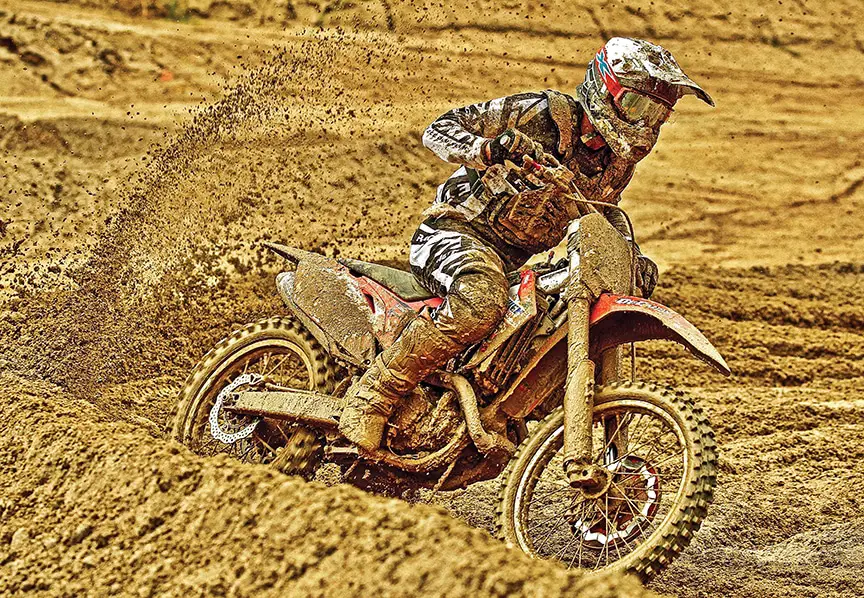 Keith’s final big Pro race was at the muddy 2017 World Vet Championship. Keith was third overall behind Doug Dubach and Kurt Nicoll in the Over-50 Pro class.
Keith’s final big Pro race was at the muddy 2017 World Vet Championship. Keith was third overall behind Doug Dubach and Kurt Nicoll in the Over-50 Pro class.
IN 1986 YOU WON A COUPLE OF 125 NATIONALS, RIGHT? The 1986 YZ125 was way better because everybody else had to be on production bikes, so it was easier. We had a little bit of a head start as far as production bikes go. I won the Southwick and Lakewood 125 Nationals, and finished fourth overall in the 125 Championship. I ended up number six for the following year. Even Supercross was good in 1986. At one point I was tied for the points lead with very little Supercross experience. I eventually finished the 250 Supercross series in sixth.
DID YOU FEEL THAT YOU HAD MADE IT AT TEAM YAMAHA? That was my third year with Yamaha. I was close to a six-figure salary, but I certainly did not get as much as everybody thought. I was going to get an agent, but Yamaha said, “We won’t even talk to you if you get an agent.” They wouldn’t even let my parents be there.
DID YAMAHA TREAT YOU FAIRLY, OR DO YOU THINK THEY TOOK ADVANTAGE OF YOU? I had a three-year contract. I was paid 60 grand the first year, 80 grand the second year and 100 grand the third year. Yamaha agreed to everything, but I asked for podium bonuses. The president of Yamaha said, “You will get bonuses for first place only. We don’t care about second or third.”
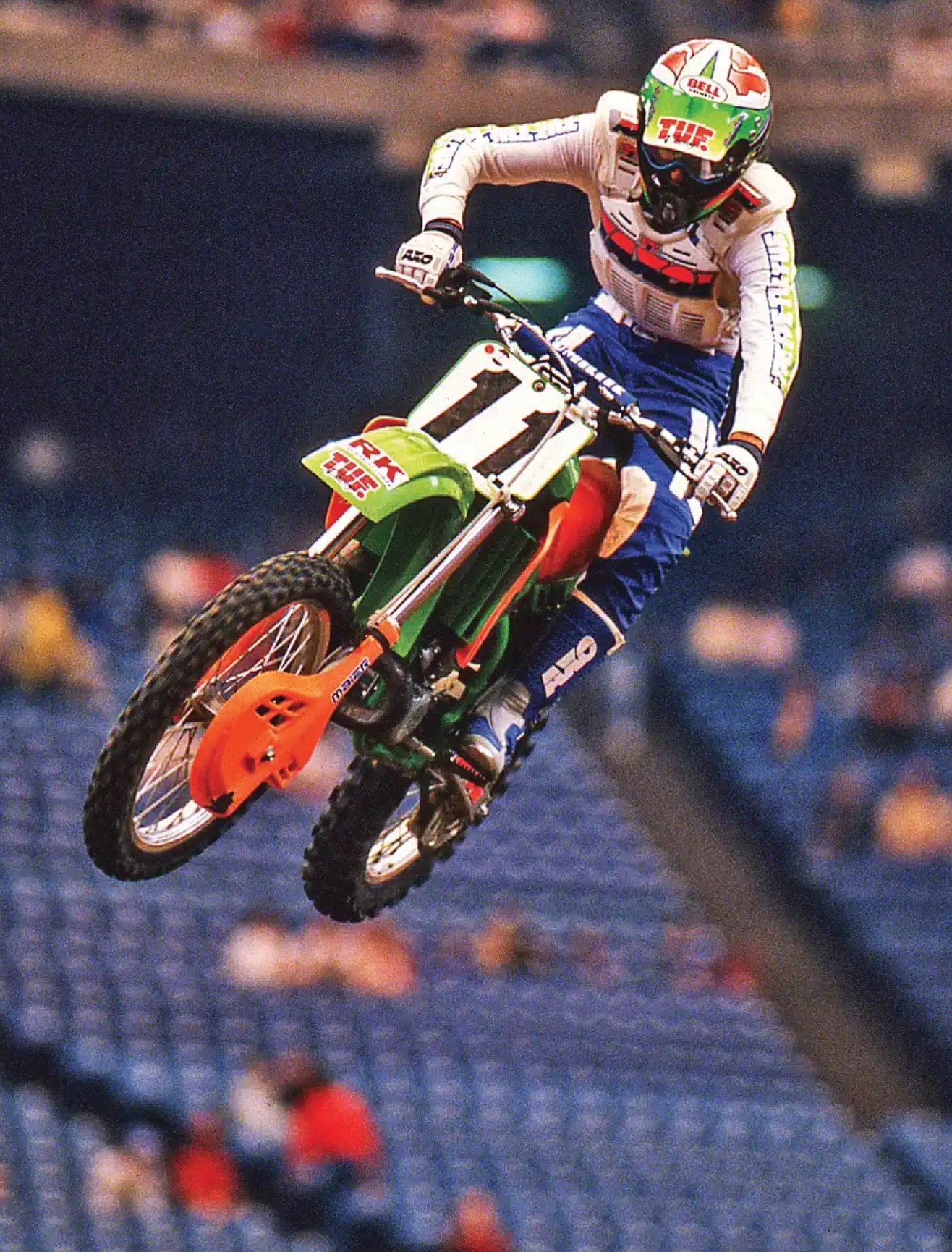 Yamaha dropped Keith in 1988, but he switched to a Tuf Racing Kawasaki with back-door help from Kawasaki.
Yamaha dropped Keith in 1988, but he switched to a Tuf Racing Kawasaki with back-door help from Kawasaki.
WHAT DID YAMAHA’S WIN BONUS LOOK LIKE? It was $5000 per race win for Supercross and outdoors, $1000 for a heat race win, and $100,000 for a championship, whether it was outdoors or indoors. Mike Bell, when he was Supercross Champion four years earlier, only got $25,000 for a Supercross Championship, so things were getting better, but not like they are now. I knew that Ricky Johnson, Ron Lechien and those guys got $350,000. They had more bargaining power.
My first year I had offers from Kawasaki and Honda, and I wish I would have taken the Honda ride, because obviously the Honda works bikes were amazing. I just did not know that the works bikes were that much better. I was 17 years old and only knew Yamaha.
WERE YOU TOO LOYAL? I knew all the guys in the Yamaha racing department from my amateur days. Maybe if I had been a little wiser, a little older and from the West Coast, I would have done things differently. We were just from the Midwest, and I did not know any better. We thought this was the way it was.
YOU STAYED WITH YAMAHA FOR 1987, RACING THE 250 NATIONAL AND 500 NATIONALS THAT YEAR, BUT THAT WAS YOUR LAST FACTORY RIDE. Yes, the Nationals were split half and half with six 250 and six 500 races. I finished fourth in the 250 Championship and seventh in the 500s.
WHY DID YOU LEAVE YAMAHA AT THE END 0F 1987? I had gotten an offer for 1988 from Yamaha, but they were cutting my salary in half. I said, “No, I will ride for free for someone else.”That is what I did for 1988. I rode for Tuf Racing without a salary, but I did get top-20 bonuses, and they paid for my flights, mechanic and everything. I liked riding for Tuf. I am still friends with owner Dave Antolak today, and if I ever do want to ride, he helps me.
YAMAHA AGREED TO EVERYTHING, BUT I ASKED FOR PODIUM BONUSES. THE PRESIDENT OF YAMAHA SAID, “YOU WILL GET BONUSES FOR FIRST PLACE ONLY. WE DON’T CARE ABOUT SECOND OR THIRD.
HOW WAS IT GOING FROM FACTORY RIDER TO PRIVATEER? My results were not better, but I liked everything else. I was now on a Tuf Kawasaki. I did not jell with the Kawasaki, but Dave tried everything you could imagine. He even bought a factory bike out the back door of Kawasaki with factory suspension and all the parts that the factory guys used to get my results better, but my confidence was not very good.
WHAT CAUSED YOUR LACK OF CONFIDENCE? David Bailey getting hurt affected me a lot, and my results suffered. 1987 was not as good as 1986. Also, losing the 1987 Daytona Supercross really affected me. I had that race won by a long way. I had the lead, crashed, went back to seventh and took back the lead. I had a huge lead when a rock got stuck in my chain, and I could not get it out. I would have gotten almost $20,000 for that race, and instead I got $200 or something. My parents were there. My mom was crying. I was on Team Yamaha then, and even Kenny Clark, the Yamaha team manager, was crying.
CONFIDENCE IS IMPORTANT FOR MOTOCROSS RIDERS, ISN’T IT? My confidence never got back up to where it was when I first got with Yamaha. I did not train like I should have. I wish I had done things a lot differently in that respect. I would not ride a lot during the week at all. I was getting burned out and did not want to ride.
BUT YOU STILL CONTINUED RACING WITH TUF IN 1988. Yes, we were on Suzukis. I did the whole 125 Outdoors in 1988 and did okay. I was top privateer for pretty much three or four years in a row. I was top privateer in Supercross. I was never near a win. I got a few top fives, but not many. I got quite a few top 10s.
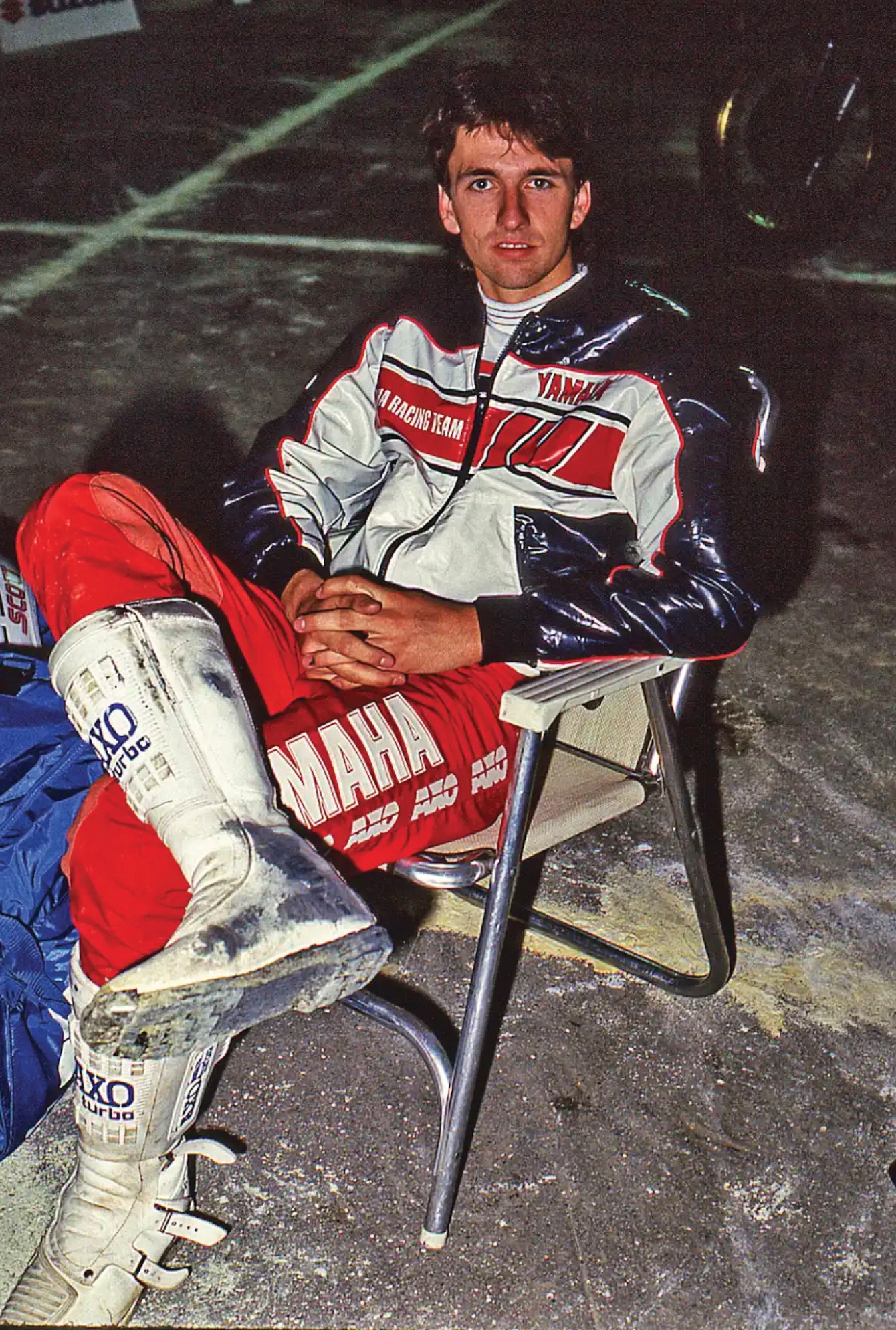 Thirteen years before his last big race at the World Vet, Keith raced at Loretta Lynn’s from 2002 to 2004.
Thirteen years before his last big race at the World Vet, Keith raced at Loretta Lynn’s from 2002 to 2004.
BY THE EARLY 1990s, WERE YOU WINDING DOWN? I was barely hanging onto my ride, but Dave liked me, and I got along well with him and his family. That basically kept me my ride. My last year was 1991, and I was number 16 that year. If I would have raced in 1992, I would have been number 18. In 1992, I signed a contract to go to Europe, but that did not work out.
DURING THAT TIME, MANY EUROPEAN DEALS WERE SUSPECT. I signed a contract with Kawasaki of Italy, and they promised me a works bike. I was supposed to be racing the 500 World Championships, but it was a 500 engine in a 250 frame. The suspension was way too soft. I ended up breaking my arm badly, and they had to take bone from my hip. I came home to heal before returning to Italy. The Italians promised me everything was going to be different, but it wasn’t.
WHAT HAPPENED NEXT? Within a month, I separated my shoulder and said, “That is enough.” The team was supplying me an apartment. I basically escaped from Italy that year. Luckily, there were some English clothing designers who lived above me, and they spoke English. I took all my clothes and belongings up to their apartment before I went to talk to the team owner and tell him that I was done.
I said, “I am done. This is not working out.” The guy’s face turned red, and he couldn’t speak English. An interpreter was there.”
He said, “Well, you owe us $30,000 for the money we already spent on you.”
I said, “I don’t have that.”
He said, “Well, give us your plane ticket and your passport, and when we get the $30,000, we will give it back.”
I said, “Well, it is back in the apartment.”So, they locked me in a room and went to my apartment to get my passport and plane ticket, which I actually had on me.
SO, ESCAPING IS THE RIGHT WORD! I broke out of the room, went up the fire escape to the English clothing designers’ apartment and said, “You have to get me to the airport.”
They said, “We can’t take you to the airport. It is a long way away. We can take you to the train station.”
I said, “That will work.”
I thought the Italian guys were going to shoot me. I finally got to the airport. My flight to Detroit didn’t leave for another 23 hours. Luckily, there was a flight to New York. I told the ticket agent, “New York is fine.” I got to New York and then took a bus from New York to Detroit. It was a mess, and I quit after that.
I RACED THE GLEN HELEN WORLD VET CHAMPIONSHIP IN 2017 AND TOOK THIRD IN THE OVER-50 EXPERT CLASS.
I HEARD RUMORS THAT YOU HAD SOME DISTRACTIONS DURING YOUR RACING CAREER. TRUE? Yes, I did, which is another reason that I did not want to train. I was partying a lot. In the mid 1980s, there were a few of us. Of course, I was one of them.Looking back, I was young, by myself and wanted to be at the parties with the girls after the races. Looking back, I wish I had not done that. Many of the riders in the off-season tried things, but I continued when the racing season began.
DID IT BECOME A PROBLEM? Yes, it became a bad problem. It was causing problems at home with my family. It was not just weed. There was a lot of cocaine. The AMA always wanted to drug test me, and I had to worry about that. It did not help my results. It hurt me mentally and physically.
AFTER YOU RETIRED PROFESSIONALLY, DIDN’T YOU COME BACK AND RACE LORETTA LYNN’S? Yes, I won another five championships. In 1996, I won two—the Plus-25 and Plus-30—on a KTM. I raced Loretta from 2002 through 2004. I won the Vet Plus-35 in 2002 and 2003. My last year there was 2004, and I took fourth in the Plus-35 class. I also raced the Plus-30 and did okay; I just didn’t win.
WHAT WAS YOUR LAST BIG RACE? I raced the Glen Helen World Vet Championship in 2017 and took third in the Over-50 Expert class. Doug Dubach won. Kurt Nicoll was second. I was third in front of John Grewe, Ron Lechien and Kevin Foley. I was surprised that I did as well as I did, because the bike I raced was nine years old.
WHAT WOULD YOU SAY TO YOUNG RIDERS COMING UP? ANY SPECIAL ADVICE? I would tell them that just because they made it into a factory rig, that does not mean they have made it. They have a long way to go. I drove nice cars and had some nice things, but never made enough money to retire on. I should not have spent money on some of the things that I bought as a young man, liked Corvettes, Rolex watches and the nightlife. A Timex will tell you the same time as a Rolex. I did not need a $10,000 watch. I am okay with my racing career.


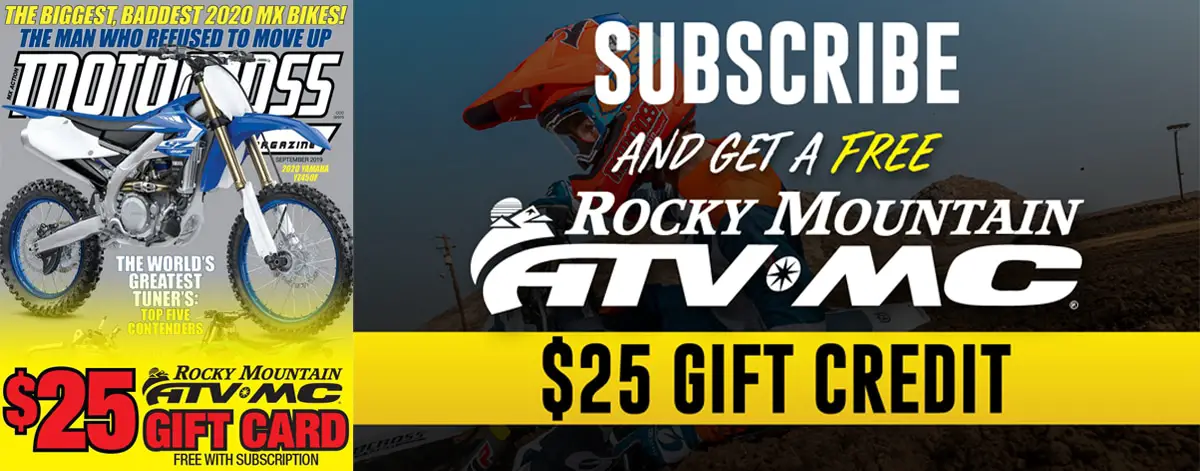
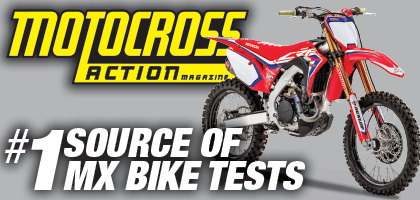


Comments are closed.